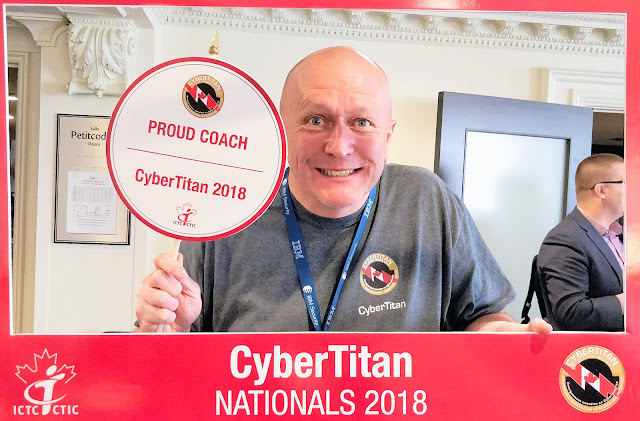TECH ENHANCEMENT: 2029
THE OPERATING SYSTEM
An open source, education focused OS based on Linux, LinED was used around the world and developed continuously by legions of users. You couldn’t access the school internet without installing LinED. Students installed it as a second OS on their computers and many ended up using it as their primary system because of all the free/subsidized software they could get on it. A student could outfit a LinEd machine with a full suite of media, gaming and productivity software for less than the cost of a single corporate production suite.
When on a school network designed for it, LinED feeds a continuous stream of activity to your school profile. Percentages of time with certain web pages open, applications running, even data on eye movement when reading a screen. Students have continual access to their own data, allowing them to self-evaluate around productive use of time. This feed back loop was one of the key events that broke the cycle of digital irrelevancy in schools and prompted students to use digital tools effectively, rather than having website designers using them as business interests saw fit. Using LinED encourages digital citizenship, and digital learning, keeping the massive distraction engine of the internet at bay while still offering students access to resources. This could only happen in an open source environment; users have to own their thought space online.
THE SOFTWARE
Within the LinED environment, students have quick and easy access to cloud based tools for learning. But as a redundancy, these cloud based systems also install on-machine apps that allow students to minimize bandwidth use while maximizing productivity. Network failure no longer means a loss of access to information. Students often fail to notice long return times on network/cloud apps because the work is balanced between their desktop machine and the cloud in such a way as to make bandwidth issues irrelevant.
An intelligent and responsive network enables much more efficient use of network resources. Web access uses a complex algorithm to prioritize traffic, thus affecting loading times. A student with a high social media activity and low performance in learning metrics find social media pages being deprioritized and loading more slowly, eventually stopping if they continued to allow themselves to be distracted. Students who develop a balance between personal web use and learning never notice a slow down. Students who prioritize learning on the network were rewarded by stunningly fast bandwidth.
Teacher grading is automatically synced with the student data and can be continuously checked by all interested parties. Success not only means greater resource availability, but also offers support staff an opportunity to see class activity in a live environment, and intervene earlier in order to help students achieve an effective balance.
Any student with a LinED system is able to access apps and software at reduced rates, often free. Students find that their LinED app ecosystem is rich with resources when compared to the private sector. Even game companies buy into the system, offering reduced cost or free access to gaming environments tied to educational success. Good students found themselves with free VirtuWoW and other game accounts on Learning+ servers, where they were able to socially network with other like-minded students, often leading to enrichment and collaboration that further supports them in the classroom and beyond.
This has greatly served to change the definition of student.
By developing a coherent feed-back system between education and technology, students (and teachers) find themselves in a blossoming ecosystem of applications, games and social networks that all benefit and spring from learning focus. The subtext of learning colours all other opportunities, allowing the idea of continuous erudition to flourish within technology.
Developers quickly find that Learning+ communities online contain highly motivated, engaged and creative individuals, who make ideal Beta communities for developing new media and ideas. They were willing to test and develop where most vanilla, private users merely wanted to use. The resource begins to feed itself.
Identifying and rewarding life-long learners goes well beyond what is happening in schools, and has prompted a digital renaissance, eventually outpacing the “limited, short-attention-span, internet for quick gain and empty use” model that preceded it. Developing interrogative digital citizens was key to this Web3.0 revolution.
THE HARDWARE
The mobilization of technology had already begun prior to the network catching up. With advances in nano-technology which prompted leaps in quantum computing, mobilization went through a brief period of hyper-miniaturization. Most computers now consist of small, hands-free devices that linked to interactive holographic displays. A smartphone sized device now represents the computing power of a typical desktop machine from 2015. With projected keyboards and screens, the smartphone evolves into the nexus for digital contact without having to carry energy and space intensive peripherals.
All of this was conceptualized prior to the takeoff in nano-technology. Post nano-tech, manufacture has become a relatively straightforward process and the computer, finally, has become truly personal. Modern computers act symbiotically with their users, recharging from their activity and enhancing their experiences. The internet is no longer in cyberspace, cyberspace is now all around us.
In a typical classroom students walk into class with their PCs fully powered (recharged from the compression motion on shoes while walking). The room’s holographic projector links to each device, bringing the student online and showing them their own enhanced reality. The card-like smartphone descendants students carry now are resilient, networked and self contained, redundant, self-charging and intuitively designed to enhance and focus, rather than distract and commoditize, their user’s attention. An app that distracts a user at a critical moment causing injury or damage is legally liable for their distraction.
It has taken many years of intensive reworking to make laws relevant to a cusp-of-a-singularity world. In most cases, people prepared to step into the singularity do, though many stay behind to shepherd the lost and confused toward the light.
This was almost disastrous initially. Until the networks and software became individually serving rather than serving marketing interests, the internet was a very dangerous place to be jacked into all the time. The push for computer control on the roads came after a sharp upspike in accidents when personal holographics first appeared.
It wasn’t until systems like LinED, and the vetted software it allowed, and other systems like VirtuOS that recognized that digital permanency meant that marketing couldn’t be continuous and distraction was libelous.
Wearing a computer is now akin to putting on trousers, everyone does it one leg at a time, but everyone does it.

































